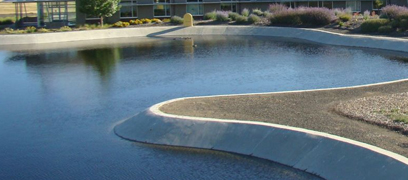Grey Water and its TSE

In a household context, grey water is the leftover water from baths, showers, hand basins and washing machines. This water can be recycled on-site for uses such as toilet flushing, landscape irrigation and constructed wetlands. After being treated and purified in sewage treatment facilities grey water is converted into treated sewage effluent (TSE) and can be re-utilised for a vast range of purposes. The sewage treatment plants that we design are equipped with Membrane Bio-reactor systems and other innovative technologies. Our plants are designed to also have a tanker receiving facility for the new areas were sewerage networks were not built.
Benefits
- Highly reusable: can be used for irrigation, cooling, agriculture, landscaping, public parks, golf course's irrigation, cooling water for power plants and oil refineries, processing water for mills, plants, toilet flushing, dust control, construction activities, concrete mixing and artificial lakes.
- Recycling capability: grey water reduces the demand on STPs as well as water treatment plants. An estimated 50 to 80% of all wastewater a residence generates is grey water, which can be put to use in irrigation of landscaping and toilet flush
- Fast decomposition: Grey water decomposes much faster than black water and only contains one tenth of the nitrogen contained in black water.
- Can replace fresh water or desalinated water: Grey water can save money and increase the effective water supply in regions where irrigation is needed where desalination processes to produce fresh water is required.
- Places less strain on septic tanks or treatment plants. Grey water use decreases loading of septic systems. For municipal treatment systems, decreased wastewater flow means higher treatment effectiveness and lower costs.
- Highly effective purification: Grey water is purified to a high degree in the upper, most biologically active region of the soil. This protects the quality of natural surface and ground waters.
- Less energy and chemical use: Less energy and chemicals are used due to the reduced amount of both desalinated water and wastewater that needs pumping and treatment.
- Plant growth: Grey water enables a landscape to flourish where water may not otherwise be available to support plant growth.
- Reclamation of wasted nutrients: loss of nutrients through wastewater disposal in rivers or oceans is a subtle but highly significant form of erosion. Reclaiming nutrients in grey water helps to maintain fertility of the land.
- By using treated waste water: industrial customers might save up to 50% in water costs.
